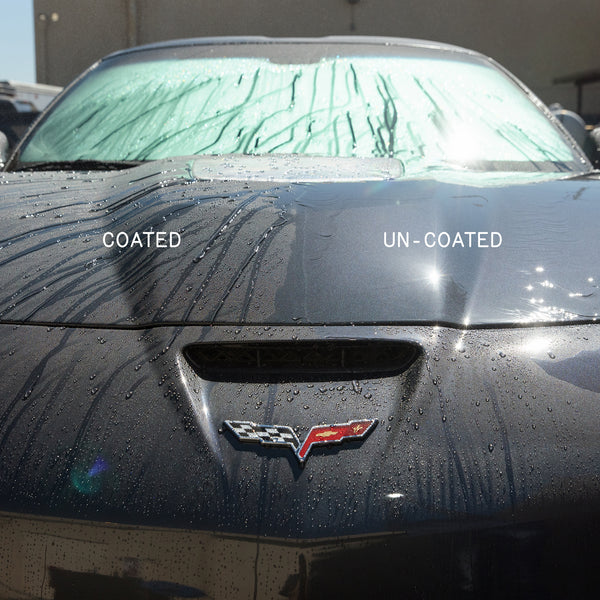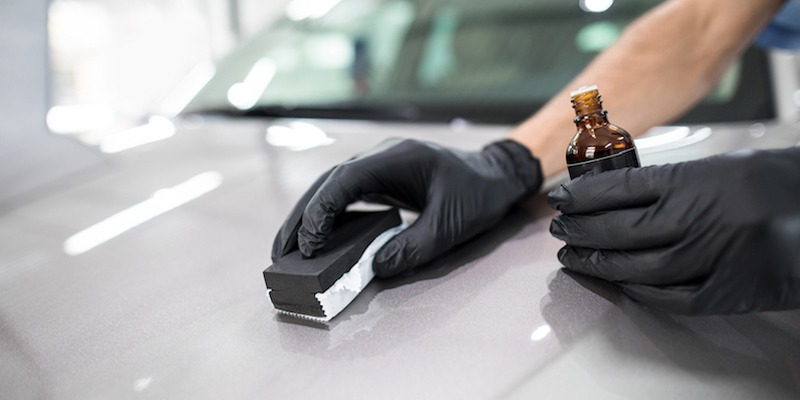How to Pick the very best Ceramic Coating for Your Lorry's Needs
How to Pick the very best Ceramic Coating for Your Lorry's Needs
Blog Article
Understanding the Scientific Research Behind Ceramic Coating for Boosted Car Durability
The science of ceramic finishing is revolutionizing vehicle upkeep by giving an awesome shield versus rough ecological aspects. As we explore the intricate structure and application process of ceramic finishings, we discover the tricks behind their superior protection and longevity (ceramic coating). Exactly how does this compare to conventional techniques, and what effects does it have for vehicle upkeep in the long term?

Structure of Ceramic Coatings
Ceramic coatings are mostly made up of silicon dioxide (SiO2), which is acquired from natural products like quartz and sand. In addition to SiO2, ceramic finishes typically incorporate titanium dioxide (TiO2) for enhanced UV protection and boosted resistance to ecological contaminants.
The formulation of ceramic coatings is a precise process where the focus of SiO2 can substantially influence the coating's efficiency. Higher SiO2 content normally results in better sturdiness and hardness, contributing to the covering's capability to resist scrapes and chemical etching. Nevertheless, the balance of parts is essential; excessive SiO2 can make the finish fragile, while inadequate can jeopardize its safety residential properties.
Suppliers might additionally incorporate extra materials, such as polysilazane, to improve versatility and convenience of application. These ingredients enhance the coating's hydrophobic residential or commercial properties, guaranteeing water and contaminants grain off the surface easily. This engineered composition emphasizes the effectiveness of ceramic coverings in safeguarding a lorry's outside against a selection of negative conditions.
Application Refine Explained
Using a ceramic covering to an automobile involves numerous vital steps, each crucial to making sure ideal adhesion and performance of the protective layer - ceramic coating. The process begins with an extensive laundry and purification of the vehicle's surface area to eliminate dust, grime, and previous waxes or sealers. This step is crucial as any contaminants left on the surface area can hinder the finish's capacity to bond successfully
Complying with the initial cleansing, the following step entails brightening the vehicle to eliminate any kind of blemishes, such as swirl marks or scratches. Sprucing up guarantees a smooth surface, which is crucial for the covering to stick correctly and give an uniform finish. After polishing, a surface area prep work spray is made use of to remove any type of continuing to be deposits and guarantee that the surface is totally tidy.

Protective Advantages
Typically hailed for its extraordinary protective high qualities, a ceramic coating supplies various benefits that significantly improve lorry sturdiness. At its core, ceramic coating develops a hard, semi-permanent obstacle over a car's outside, which acts as a guard against different ecological threats.
In addition, ceramic finishings show hydrophobic residential properties, meaning they fend off water and assist in a self-cleaning result. This quality reduces the adherence of dirt and mud, simplifying upkeep and cleansing procedures. The layer's resistance to chemical etching additionally ensures that the vehicle's surface stays unblemished in spite of direct exposure to extreme cleaning representatives and pollutants.
Along with these protective benefits, the ceramic coating enhances a lorry's aesthetic allure by creating a shiny surface that highlights shade depth and clarity. This not only maintains the vehicle's aesthetic appeal yet also adds to its long-term value by preserving the stability of its outside with time.
Contrasting to Conventional Approaches
Unlike standard techniques of vehicle protection, such as shaving or sealants, ceramic finishes use a more durable and lasting remedy. Where waxes and sealants generally give a short-term layer of defense, usually needing reapplication every couple of months, ceramic coverings form a semi-permanent bond with the lorry's paint. This bond creates a safety layer that is resistant to environmental impurities, UV damage, and minor abrasions.
Standard waxes are largely made up of natural components like carnauba wax, giving a glossy surface yet address doing not have the robust safety qualities of ceramic coatings. Sealers, while synthetic and offering slightly better sturdiness right here than waxes, still drop brief in contrast to the strength and chemical resistance of ceramic coatings. The innovative modern technology of ceramic finishings incorporates nanotechnology, which permits them to complete tiny imperfections in the paint surface area, leading to a smoother and a lot more hydrophobic finish.
In terms of application, ceramic layers call for a more precise procedure, typically demanding professional installation to make certain optimum performance. This contrasts with the fairly uncomplicated application of waxes and sealers, which can be used at home. However, the superior defense and aesthetic improvement given by ceramic finishes validate the financial investment for those looking for long-term automobile conservation.
Durability and Upkeep
How does the durability of ceramic finishings translate into simplicity of maintenance for automobile proprietors? The advanced formula of ceramic coverings provides a robust protective layer on the car's surface area, which considerably expands the life expectancy of the vehicle's outside finish. This toughness suggests that the layer functions as a guard against environmental pollutants such as UV rays, bird droppings, and road grime, which can or else weaken paintwork gradually. Therefore, cars coated with ceramic products require less constant washing read and outlining initiatives, thus lowering upkeep time and costs for proprietors.
Additionally, the hydrophobic nature of ceramic coatings allows water and other fluids to grain up and roll off the surface area, carrying dirt and particles with them. While the layer itself is durable, it is not entirely maintenance-free. Therefore, ceramic layers provide an important equilibrium in between long-lasting durability and simplified maintenance for automobile treatment.
Verdict
Ceramic finishings, with their innovative chemical make-up of silicon dioxide and titanium dioxide, give an awesome obstacle versus ecological damages, significantly enhancing vehicle durability. The hydrophobic residential properties promote self-cleaning, decreasing maintenance initiatives and preserving visual allure. When compared to conventional methods, ceramic coatings offer remarkable security against UV rays, oxidation, and chemical etching. This modern technology expands the life expectancy of car outsides, making it an ingenious solution for long-term conservation and marginal upkeep.
The solution of ceramic layers is a meticulous procedure where the concentration of SiO2 can significantly influence the finish's performance.Using a ceramic covering to an automobile includes a number of critical steps, each vital to making certain optimal bond and efficiency of the safety layer.Commonly hailed for its extraordinary protective qualities, a ceramic finishing supplies numerous benefits that significantly enhance automobile longevity. The advanced solution of ceramic layers provides a durable protective layer on the vehicle's surface area, which considerably extends the life-span of the cars and truck's exterior finish.Ceramic finishes, with their advanced chemical composition of silicon dioxide and titanium dioxide, give a formidable barrier against ecological damage, considerably improving automobile durability.
Report this page